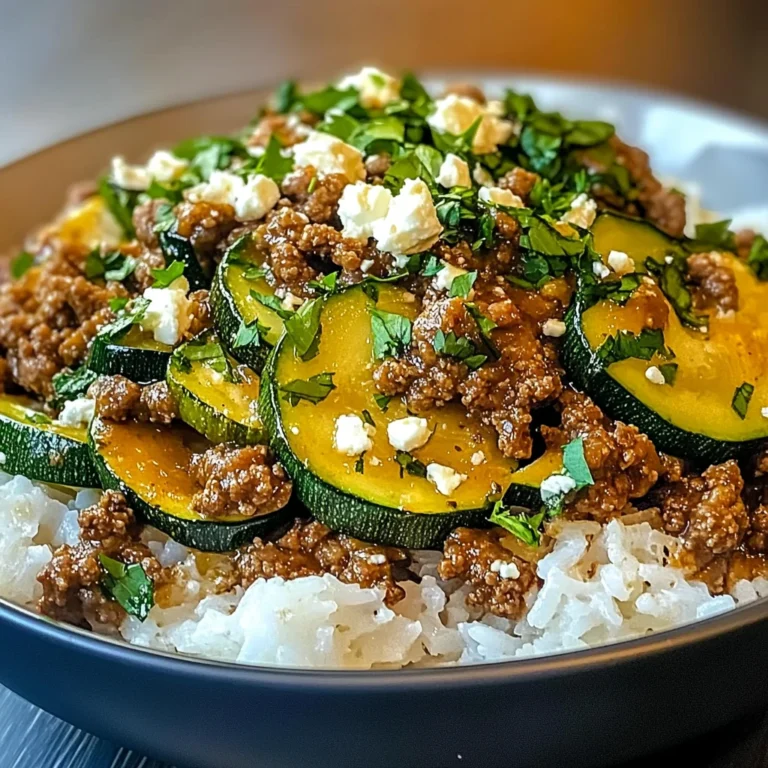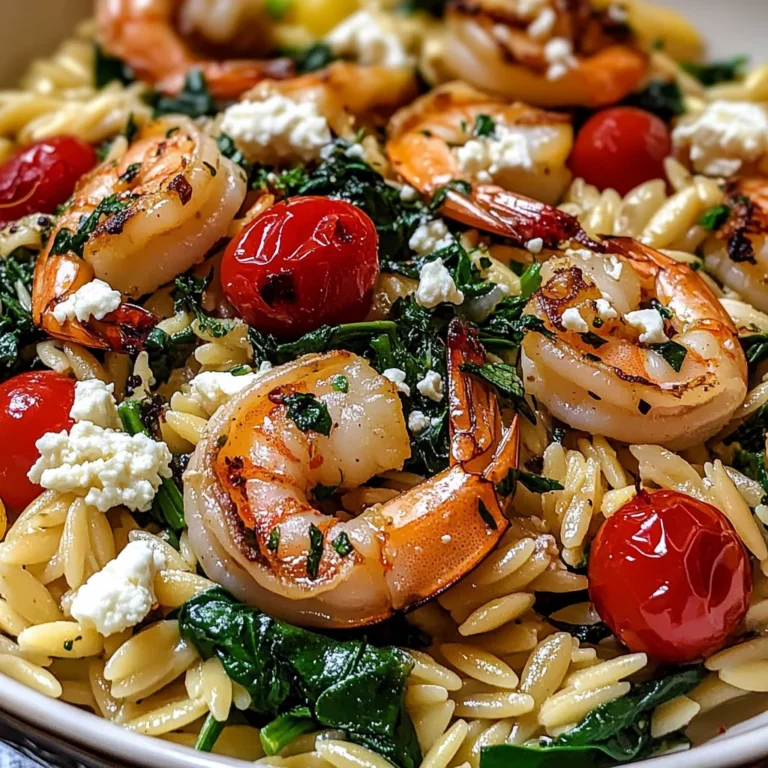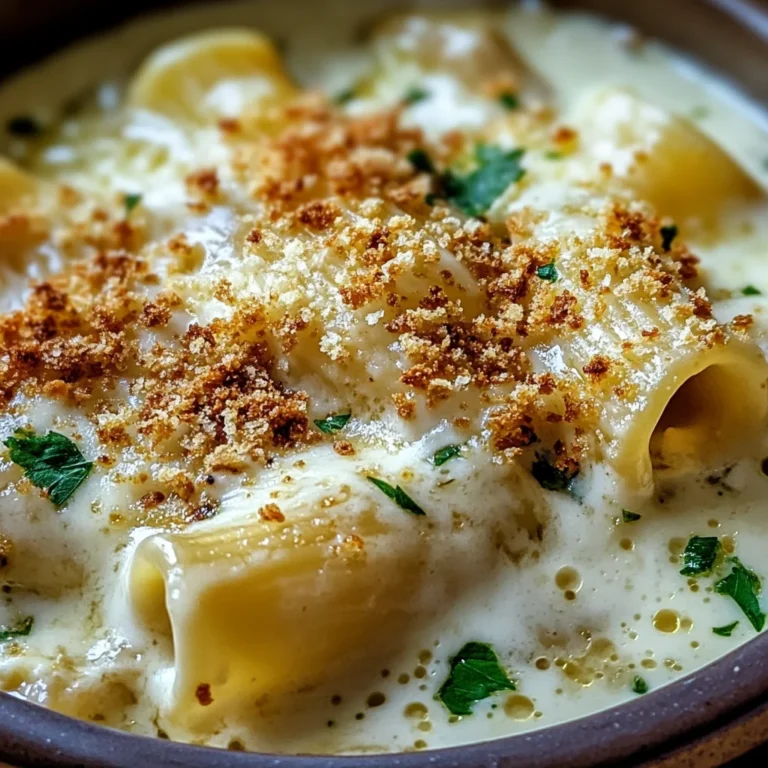Hibachi Vegetables
Hibachi Vegetables are a delightful and colorful dish that brings the flavors of Japanese cuisine right to your kitchen. With fresh ingredients like zucchini, yellow squash, mushrooms, and onions, this recipe is perfect for any occasion. Whether you’re hosting a dinner party or simply enjoying a weeknight meal, these vegetables will impress with their vibrant taste and easy preparation.
Why You’ll Love This Recipe
- Quick and Easy: This recipe takes only 30 minutes from start to finish, making it perfect for busy weeknights.
- Flavorful and Fresh: The combination of butter and soy sauce enhances the natural flavors of the vegetables, creating a delicious side dish.
- Versatile Pairing: Hibachi Vegetables complement a variety of main dishes, from grilled meats to rice bowls.
- Healthy Option: Packed with vitamins and low in calories, this dish is a nutritious choice for any meal.
- Homemade Hibachi Experience: Enjoy the restaurant-style experience in the comfort of your home without needing specialized equipment.
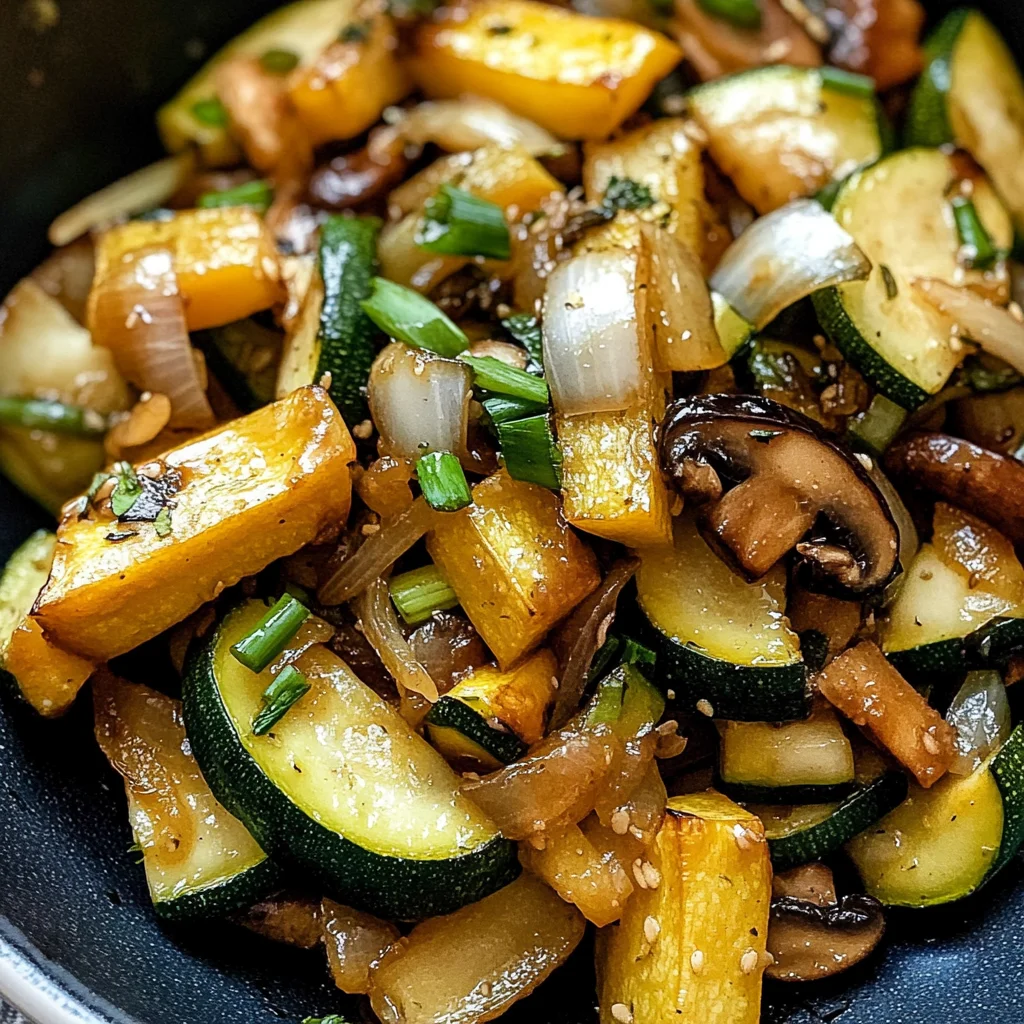
Tools and Preparation
To make Hibachi Vegetables successfully, you’ll need some essential tools that can enhance your cooking experience.
Essential Tools and Equipment
- Wok or large skillet
- Cutting board
- Knife
- Measuring spoons
- Spatula
Importance of Each Tool
- Wok or large skillet: Provides ample space for sautéing vegetables evenly while allowing for easy stirring.
- Knife: A sharp knife makes chopping vegetables quick and safe.
- Spatula: Ideal for flipping and stirring ingredients without damaging them.
Ingredients
Hibachi Vegetables are made with fresh yellow squash, zucchini, mushrooms, and onions. It is the same Japanese style restaurant version in the comfort of your own home.
For the Base
- 1 tablespoon butter
- 2 tablespoons vegetable oil or olive oil
- 1 cup onion, quartered and thinly sliced
For the Vegetables
- 2 cups zucchini, cut into strips
- 2 cups yellow squash, cut into strips
- 1 cup mushrooms, sliced
For Seasoning
- 2 teaspoons soy sauce
- 1/4 teaspoon salt
- 1/4 teaspoon ground black pepper
How to Make Hibachi Vegetables
Step 1: Heat the Skillet
Begin by heating the wok or large skillet over medium-high heat. Add the 1 tablespoon butter; once it melts, add in the 2 tablespoons oil.
Step 2: Sauté Onions
Add the 1 cup sliced onion to the skillet. Sauté for about 2 minutes until it starts to soften and become translucent.
Step 3: Add Vegetables
Incorporate the prepared 2 cups zucchini, 2 cups yellow squash, and 1 cup mushrooms into the skillet. Stir well to combine.
Step 4: Season and Cook
Next, add in the 2 teaspoons soy sauce, 1/4 teaspoon salt, and 1/4 teaspoon ground black pepper. Continue to cook while stirring frequently until the vegetables reach your desired tenderness, which should take about 10 minutes.
Step 5: Serve Warm
Serve your Hibachi Vegetables warm alongside hibachi-style fried rice and yum yum sauce. Any leftovers can be stored in an airtight container in the refrigerator for up to three days.
How to Serve Hibachi Vegetables
Hibachi Vegetables can be enjoyed in various ways, making them a versatile side dish for any meal. Here are some delicious serving suggestions to elevate your dining experience.
With Fried Rice
- Pair your hibachi vegetables with hibachi-style fried rice for a complete meal. The flavors complement each other wonderfully.
As a Topping for Noodles
- Add the sautéed hibachi vegetables on top of noodles like udon or soba. This creates a delightful blend of textures and tastes.
Accompanying Grilled Meats
- Serve alongside grilled chicken, beef, or shrimp. The savory taste of the vegetables enhances the flavors of the protein.
In a Wrap
- Use hibachi vegetables as a filling in wraps or burritos. They add freshness and crunch, making your lunch more exciting.
With Dipping Sauce
- Serve with a side of yum yum sauce or soy sauce for dipping. This adds an extra layer of flavor that everyone will enjoy.
How to Perfect Hibachi Vegetables
To achieve the best results with your hibachi vegetables, consider these helpful tips.
-
Use Fresh Ingredients: Fresh squash, zucchini, mushrooms, and onions enhance flavor and texture. Always choose high-quality produce for the best outcome.
-
Preheat Your Pan: A hot wok or skillet is crucial for achieving that perfect stir-fry texture. Make sure it’s well-heated before adding your ingredients.
-
Cut Uniformly: Chop all vegetables into similar sizes to ensure even cooking. This helps them cook at the same rate and improves presentation.
-
Don’t Overcrowd: Avoid overcrowding the pan to allow vegetables to sauté rather than steam. Cook in batches if necessary for optimal results.
-
Adjust Seasoning: Feel free to tweak the soy sauce, salt, and pepper amounts according to your taste preferences. Experimenting with spices can lead to unique flavors.
Best Side Dishes for Hibachi Vegetables
Pairing side dishes with your hibachi vegetables can enhance your meal significantly. Here are some excellent options:
-
Fried Rice
A classic companion, fried rice brings added flavor and a satisfying texture to your meal. -
Miso Soup
This light soup provides warmth and umami flavors that balance well with the freshness of hibachi vegetables. -
Japanese Pickles
These tangy sides add a refreshing contrast and cleanse the palate between bites of rich foods. -
Grilled Teriyaki Chicken
Sweet and savory teriyaki chicken pairs beautifully with grilled veggies, creating a harmonious plate. -
Edamame Beans
Steamed edamame sprinkled with sea salt offers a fun finger food option that complements the dish perfectly. -
Seaweed Salad
This salad introduces an interesting texture and briny flavor that aligns well with Japanese cuisine’s essence. -
Tempura Vegetables
Crispy tempura adds crunch and richness, making it an appealing contrast to the softness of hibachi vegetables. -
Sushi Rolls
Pairing sushi rolls filled with fresh ingredients makes for an exciting dining experience alongside your vegetable dish.
Common Mistakes to Avoid
Cooking Hibachi Vegetables can be simple, but a few common mistakes can ruin the dish. Here’s how to ensure your vegetables turn out perfect every time.
- Skipping the Prepping Step: Always wash and cut your vegetables beforehand. This makes cooking efficient and ensures even cooking.
- Overcrowding the Pan: Avoid adding too many vegetables at once. This can cause them to steam instead of sauté, leading to soggy results. Cook in batches if necessary.
- Using Low Heat: Hibachi cooking requires high heat for that perfect char. Using low heat won’t give you the authentic flavor or texture you desire.
- Neglecting Seasoning: Don’t forget to add salt and pepper! These enhance the flavors of your Hibachi Vegetables. Taste as you go and adjust accordingly.
- Forgetting to Stir Frequently: Stirring helps cook everything evenly and prevents burning. Keep those veggies moving in the pan!
- Ignoring Freshness: Always use fresh vegetables for the best taste. Stale or old produce will affect the overall quality of your Hibachi dish.
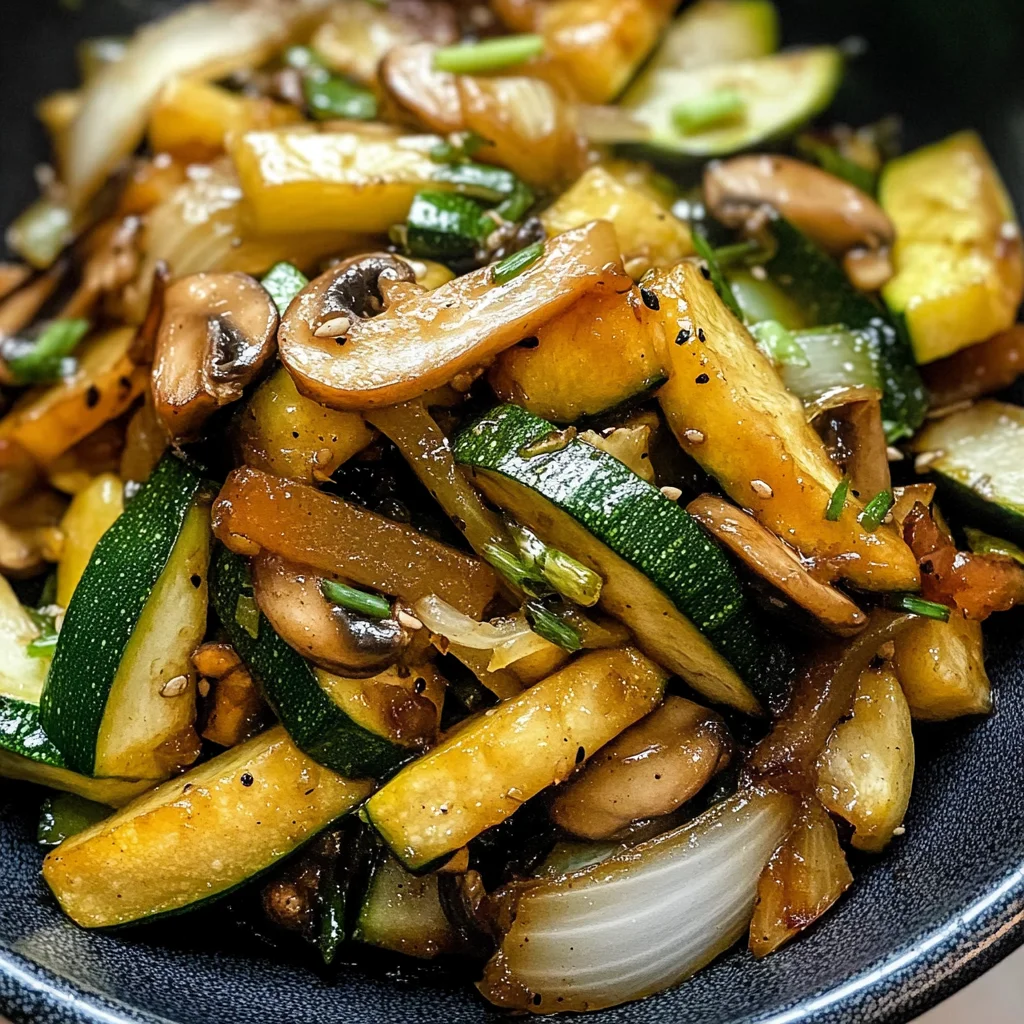
Storage & Reheating Instructions
Refrigerator Storage
- Store leftovers in an airtight container for up to 3 days.
- Allow the vegetables to cool before sealing to prevent moisture buildup.
Freezing Hibachi Vegetables
- Freeze in a freezer-safe bag or container for up to 2 months.
- Make sure to remove as much air as possible from bags to avoid freezer burn.
Reheating Hibachi Vegetables
- Oven: Preheat the oven to 350°F (175°C) and bake for about 10-15 minutes until heated through.
- Microwave: Place in a microwave-safe dish with a lid; heat on high for 1-2 minutes or until hot, stirring halfway.
- Stovetop: Heat a skillet over medium heat, add a splash of oil, and sauté until warmed through.
Frequently Asked Questions
Here are some common questions about Hibachi Vegetables that may help you master this recipe.
What are Hibachi Vegetables?
Hibachi Vegetables typically include zucchini, yellow squash, mushrooms, and onions cooked on a high heat grill or skillet, giving them an authentic Japanese flavor.
Can I customize my Hibachi Vegetables?
Absolutely! Feel free to add or substitute other veggies like bell peppers, broccoli, or carrots based on your preference.
How do I make my Hibachi Vegetables more flavorful?
You can enhance flavor by adding garlic or ginger while cooking. Soy sauce is also great for that extra umami kick.
Are Hibachi Vegetables healthy?
Yes! They are packed with nutrients from fresh vegetables and are low in calories, making them a healthy side dish option.
Final Thoughts
Hibachi Vegetables offer a delightful way to enjoy fresh produce with an Asian twist right at home. The recipe is versatile—feel free to mix in your favorite vegetables or adjust the seasoning for personal preference. Try it alongside fried rice or grilled proteins for a complete meal!
Hibachi Vegetables
Hibachi Vegetables are a vibrant and delicious side dish that brings the essence of Japanese cuisine to your dinner table. With fresh ingredients like zucchini, yellow squash, mushrooms, and onions sautéed to perfection, this dish is both quick and easy to prepare. Ready in just 30 minutes, Hibachi Vegetables make an excellent accompaniment to grilled meats or rice bowls and can elevate any meal with their colorful presentation and rich flavors. Enjoy the restaurant-quality experience in your home kitchen without needing specialized equipment.
- Prep Time: 10 minutes
- Cook Time: 20 minutes
- Total Time: 30 minutes
- Yield: Serves approximately 4
- Category: Side Dish
- Method: Stir Fry
- Cuisine: Japanese
Ingredients
- 1 tablespoon butter
- 2 tablespoons vegetable oil
- 1 cup onion (quartered and thinly sliced)
- 2 cups zucchini (cut into strips)
- 2 cups yellow squash (cut into strips)
- 1 cup mushrooms (sliced)
- 2 teaspoons soy sauce
- 1/4 teaspoon salt
- 1/4 teaspoon ground black pepper
Instructions
- Heat a wok or large skillet over medium-high heat. Add butter until melted, then add vegetable oil.
- Sauté the sliced onion for about 2 minutes until translucent.
- Add zucchini, yellow squash, and mushrooms; stir to combine.
- Season with soy sauce, salt, and pepper. Cook for approximately 10 minutes, stirring frequently until vegetables reach desired tenderness.
- Serve warm alongside your favorite main dishes.
Nutrition
- Serving Size: 1 cup (150g)
- Calories: 90
- Sugar: 3g
- Sodium: 300mg
- Fat: 5g
- Saturated Fat: 2g
- Unsaturated Fat: 3g
- Trans Fat: 0g
- Carbohydrates: 10g
- Fiber: 3g
- Protein: 2g
- Cholesterol: 10mg



